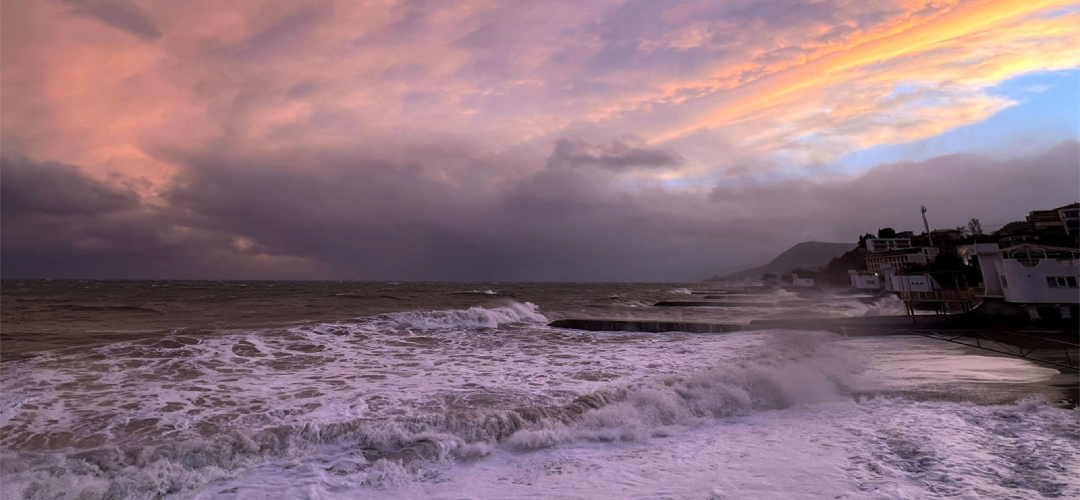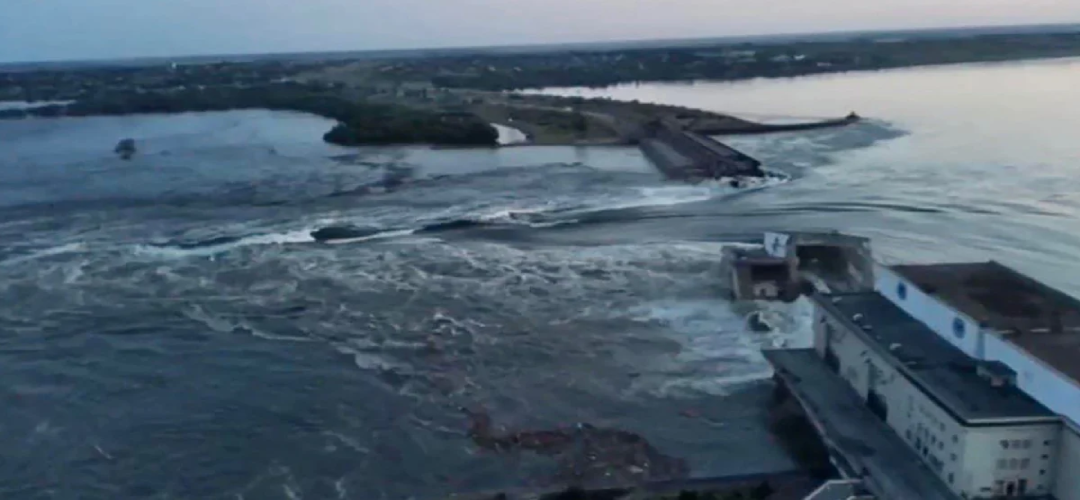Tidal Impact: Ukraine's High Tides on Russia
March 3, 2024 | Expert Insights

The fall of the Ukrainian industrial city Avdiivka and the city of Bakhmut marked two major wins for Russia since the beginning of the war in Ukraine in February 2022. Ukraine’s counteroffensive strategies have been remarkable, considering their size difference. Official Russian media outlets repeat that Russia conflicts with the North Atlantic Treaty Organisation (NATO), and not Ukraine, and is something of an underdog in the fight. Still, Russia holds one-fifth of the Ukrainian territory. So now that Ukraine has made many notable efforts to fight for its “fatherland”, what does it mean for them in the long run?
Background
Since its independence on 24 August 1991, Ukrainian governments have waned back and forth between the NATO alliance and Russia. Putin has been clear that Ukraine should be under Russia’s jurisdiction and has been trying to seal the direction of its sovereignty aggressively. What began as a Russian annexation of the Crimean peninsular in late February 2014 has turned into a war of attrition in Ukraine. The two continue to fire at each with Russians dropping nearly 60 bombs on Ukrainian positions daily. U.S. officials said the aggregate total of fighters killed or injured on both sides comes up to around 500,000, which is most definitely higher in reality.
Russia failed to capture Kyiv in March 2022, and Ukrainian counteroffensives give analysts some hope for a possible resolution by 2025. From September to November 2022, Ukrainian forces liberated nearly 3000 sq km of territory near the north-eastern edge of the Donetsk province in six days. After three vigorous weeks of battle, Ukraine had laid the groundwork to advance towards Svatove, a crucial Russian logistics centre. On November 11, Ukrainian troops advanced into Kherson, the Capital City of Kherson Oblast in Ukraine, after Russian forces withdrew from the southern city. The Russian Defence Ministry justified the loss of territory and withdrawal of troops as regrouping. But it sealed one of the biggest setbacks in Russia’s attrition plans.
On 6 June 2023, the Kakhovka dam, which spanned the Dnipro River in Southern Ukraine, was breached by an internal explosion. 520 sq km of land, or an area a third the size of London, had flooded. Oleshky, a Russian-occupied town South of the Dnipro River, was one of the most affected, where residents had to use their roofs to escape the flood. The Kakhovka Dam collapse is recognised as one of the worst technological disasters because it was a vital part of the local hydroelectric power plant. Ukraine blames Russian-occupied troops for the disaster, while Russians claim Ukrainian sabotage; however, the verified cause of the collapse remains ambiguous. Kyiv’s progress and Moscow’s retreat across the Dnipro river under Ukrainian artillery fire indicated Russia surrendering the only provincial capital it captured in the war, therefore ceding strategic positions.
Between 11 and 13 June 2023, Ukrainian forces breached Russia’s first defence line and liberated seven villages in the South of the Donetsk region. Almost a month later, Ukraine attacked the Crimea bridge that connected the Russian mainland to the occupied peninsular. At the turn of August, Russia blamed Ukraine for drone strikes targeted at skyscrapers in Moscow’s central business district. Four days later, Ukraine’s security services and navy conducted sea drone strikes outside the port of Novorossiysk, which is a major naval base and oil-exporting terminal located east of Crimea and within the international Russian borders. In the same month, an elite Ukrainian squad troop raided Crimea’s western coast, marking the first official incursion into the Russian-occupied peninsular since 2014.
Since October 2023, Russia launched wave after wave of attacks on the Ukrainian industrial city Avdiivka, and on February 19, 2024, Russian forces captured the Ukrainian military stronghold that had stood since 2014. Ukraine’s current top military commander said that the decision to withdraw troops was to avoid encirclement and preserve the lives and health of soldiers. The fall of Avdiivka marks Russian forces' first major victory since the Battle of Bakhmut in May 2023. After rebuking the Ukrainian counteroffences in the summer and fall of 2023, Russian units have been fortifying the 1000 km frontline with anti-tank ditches, zig-zag trenches, concrete “dragon’s teeth” barricades, steel “hedgehog” obstacles, razor wire and minefields.
The northern border of Crimea, from Armynask in the north to Dzhankoi in the northwest, valued as the transport hubs and gateways to the peninsular, has been reinforced with a combination of trenches and tank traps. Russia places a higher strategic priority on Crimea than on other occupied Ukrainian areas, most likely due to the historic significance of Sevastopol as the naval base for Russia's Black Sea fleet. Russia paid special attention to fortifying Berdyansk Airfield near the Sea of Azov, which is known to be a Russian military aircraft hub. Russia’s most fortified frontline area is in Southern Zaphorizhzhia province as they anticipate Ukrainian troops' counteroffences at the “land bridge” connecting Russian territory with occupied Crimea. Russia also built layers of "dragon's teeth" trenches and other offensive barriers over the vast expanse of occupied terrain around the eastern cities of Severodonetsk, Lysychansk, and Popasna, which were captured in May and June 2022. Ukrainian breakthroughs in these areas will be difficult.
Analysis
In Ukraine, Putin has utilised constitutional referendums in Donbas, Kherson, and Zaporizhzhia to try to establish Russia's right to claim Ukrainian territory, alongside the threat of nuclear weapons to further entrench territorial control. In a crisis, nuclear weapons can be used in deterrence, which inhibits aggression by an enemy by threatening a major counter-attack, or in compellence, which is used to negotiate things like peace treaties by threatening a massive deployment of forces on the adversary. Studies have shown that nuclear weapons are effective for deterrence but weaker for compellence. Owing to Ukraine’s performance in the war, Russia’s nuclear strategy has proven counterintuitive as the former battled hard for its sovereignty. But talk in the Kremlin’s higher order about the use of nuclear is still ongoing, despite reports of Russia’s nuclear threshold in battlefield success being lower than expected.
Russia has also been reported to be recruiting Middle Eastern and Asian national mercenaries, especially from India and Nepal, under the pretext of well-paid, low-combat military-related aid. These individuals found ads on social media claiming that Russia was recruiting “army helpers” with a monthly salary of $1200, and none of them had prior military training. However, they were issued and trained to use Kalashnikov Assault rifles and sent to fight in the war. AFP news agency saw a Russian-language defence ministry contract which refers to “military service in the armed forces of the Russian Federation” with a requisite to “participate in hostilities and serve the Russian people without limit.” Neither Ukraine nor Russia share the number of foreign soldiers in their armies or the number of prisoners of war. However, analysts say Russia's efforts to seek recruits from these regions are only one aspect of a global recruitment drive, including a massive campaign at home.
It seems as though Ukraine’s indecisiveness puts Russia’s national security interests at risk, one that Russia cannot afford at this point in its geopolitical stance. As the world’s most sanctioned nation, it stands at several tricky crossroads to protect itself. The Russian military casualty count has spiked in 2023, which analysts say reflects its army’s deteriorating quality and transition to high quantity. Reports suggest North Korean munition factories are operating at full capacity to produce artillery for Russia in exchange for food and essential shipments. A fact sheet by the U.S. Department of State records North Korea has delivered over 10,000 containers of munitions or analogous equipment to Russia since September 2023. Ukraine is in an artillery ration state. Ukrainian President Volodymyr Zelenskiy proposed holding a Ukrainian-Balkan military forum in Kyiv or a Balkan Capital to promote weapons cooperation, as it did in 2022 with British and US weapons corporations. They are adamant about the fight but will need a bulk of support from its allies to maintain strategic strength.









Comments